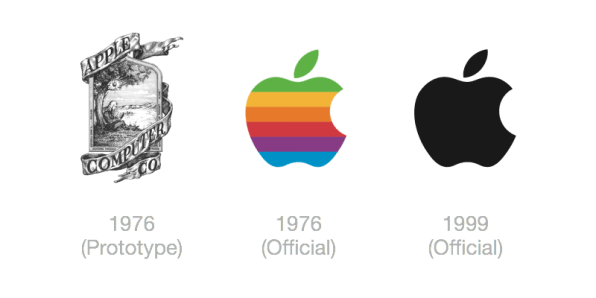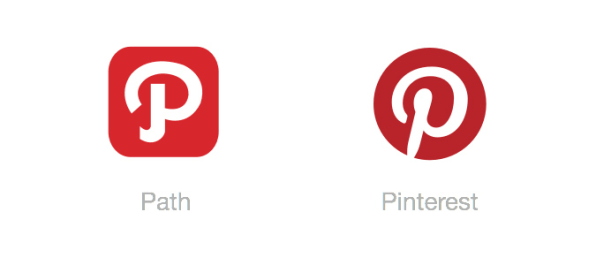How To Draw A Bruins Logo
Your company's logo is the foundation of your business branding. It is probably the outset interaction that y'all will take with your customers. An effective logo can establish the right tone and set the proper ethos. Afterwards years of crafting logos for unlike projects, I've come up up with a set of questions that I always ask myself before delivering a new logo.
1. What emotions does the logo evoke?
To a higher place all design guidelines, the most of import benchmark is whether the logo reflects the character of the company. The emotions that the logo evoke should be appropriate to the visitor values. For example, the Disney logo evokes a sense of happiness and optimism. The curvy, fun typeface is advisable for a company that has been making cartoons and blithe pictures for kids. Still, a similar logo style on a sales platform would not exist advisable.
Designers should sympathize the psychology of colors and the effect that typeface has on the design of a bang-up logo. For example, greenish promotes relaxation and usually reflects growth, health, and the surround. Cherry-red, on the other hand, may evoke danger and passionate emotions. Similarly for typefaces, Garamond, Helvetica, and Comic Sans all arm-twist very dissimilar sentiments. Serif fonts like Garamond promote the thought of respect and tradition, and are hence more than suitable for an surround that demands integrity such as a university or a news publisher. Sans Serif fonts like Helvetica are clean and modern, and are well suited for high-tech businesses. Coincidental script fonts like Comic Sans are probably best left for fun companies such as toy companies. A good understanding of the psychology of colors, typefaces, and shapes is an important office of making a groovy logo.

2. What'southward the meaning behind the logo?
Behind every dandy logo is a story. A slap-up logo is not near slapping your business name on a generic shape, which is why choosing from ready-made logos is a poor idea. A logo has to accept a meaningful story. A good designer first understands the civilization of the company, the tone of the product, and the vision of the business, much before embarking on ideas for the logo. The end result of a quality logo is cogitating of the philosophy and values of the visitor.

three. Volition the logo stand the test of time?
How will the logo look in two, 10, 20 years? Designers should avoid getting sucked into flavour-of the-month trends. Trends similar ultra-thin fonts and flat shadows are blueprint styles that will probably not stand the examination of time. Elementary is far better than circuitous. A elementary yet memorable logo can be used in xx years without looking dated.
A good way to test the logo is to allow information technology sit with you lot for a while before releasing it. Some logos abound with you–the more you expect at it, the more than yous like information technology. Some logos first to feel nauseating after a while–the more yous expect at it, the more you lot detest information technology. If after a couple of weeks with the logo you lot notice it boring, the logo is probably not strong or timeless enough.

four. Is it unique? Tin can information technology be instantly recognizable?
A smashing logo is distinctive, memorable, and recognizable. Even if you accept only seen it once, you should still be able to think what it looks similar later on a period of time. A expert way to examination this is to bear witness your logo to a friend, and so cover it upwards and accept your friend depict the logo in a calendar week. A fresh pair of eyes can be very effective in figuring out the most memorable components of a logo.
In addition, if the logo reminds you of others y'all have seen, it is not distinct plenty.

5. How does it wait in black and white?
When I brainstorm designing a logo, I always start in black and white. Designing with this limitation first forces you lot to make sure that the logo is recognizable purely by its shape and outline, and not by its color. A strong logo is i that is still memorable just past its contours.
A one-color logo also provides the benefit of using your brand easily in multiple mediums with different backgrounds and textures.

6. Is it clear and distinct in small dimensions?
Another fashion to make sure logos are unproblematic and recognizable is to calibration it downwards dramatically. Even at tiny resolutions, a strong logo should nevertheless be recognizable at a glance. This is also a good test to make sure that the logo is not complicated with unnecessary pattern flourishes. Here, y'all see that the Nike, McDonalds, Twitter, and WWF logos are still very distinct at modest sizes. The GE and Starbucks logos are far more cluttered, and less recognizable when they are pocket-size.

These are not hard-and-fast rules, but guidelines for making an constructive logo. It is all the same possible to make a stiff, complicated logo, but understand the trade-offs.
This article was edited and republished with permission from the author. Read the original here.
Source: https://www.fastcompany.com/3031328/the-makings-of-a-great-logo
Posted by: masseywicis1978.blogspot.com




0 Response to "How To Draw A Bruins Logo"
Post a Comment